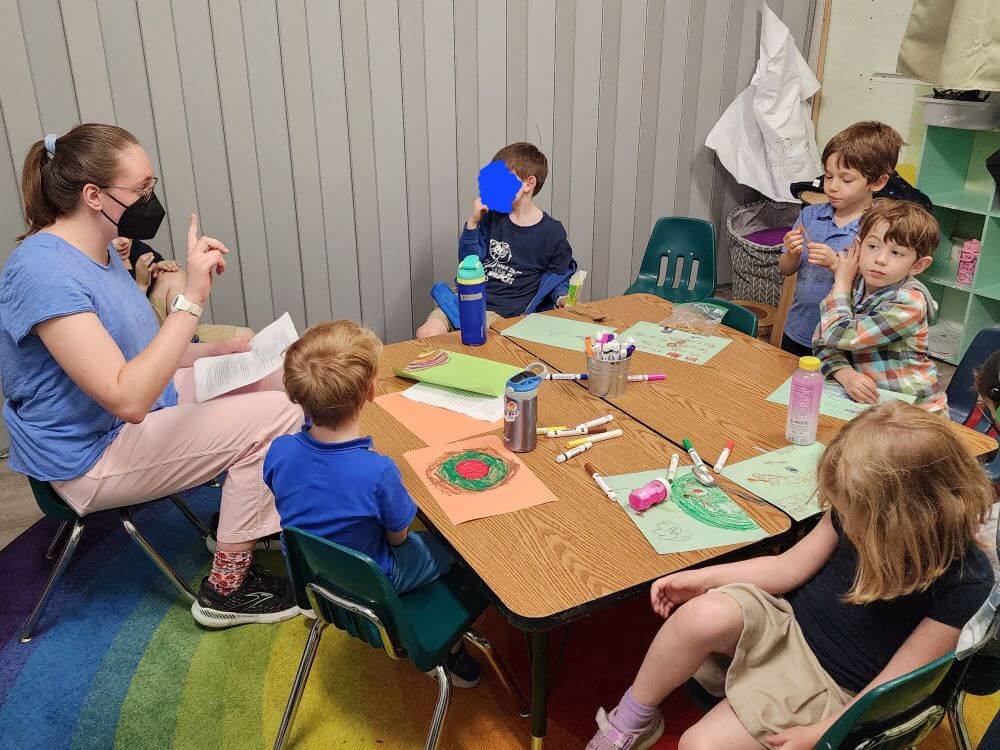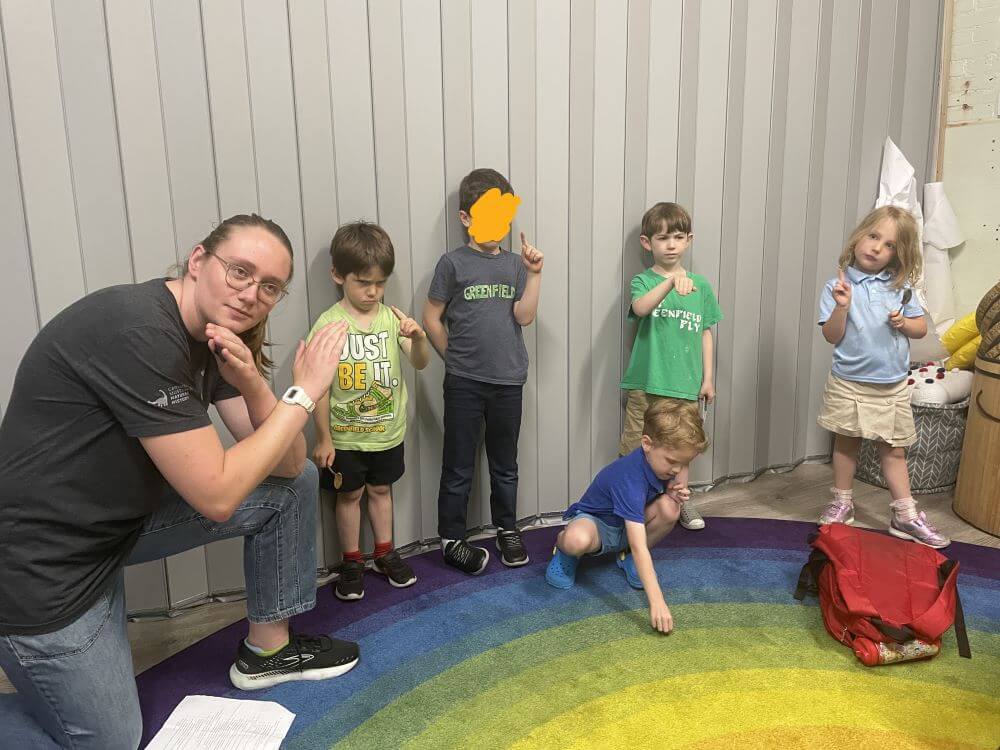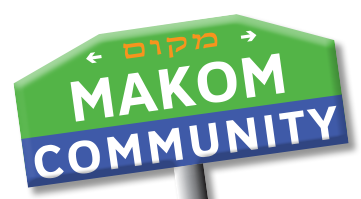
In April, all the learners in Jewish enrichment at Makom embarked upon a detailed study of the 10 commandments, taking a day or two to deep dive into each one. Since I started working at Makom in mid-March, my first two weeks were full of Purim celebrations and spring break camp, so this was my first chance to build and implement a curriculum with our Garinim (Kindergarten and 1st Grade) learners. As a new teacher, I was ecstatic that this unit would be my first unit at Makom, as the inherent structure of the 10 commandments mirrored some of the structures that I was eager to implement in the Garinim kvutzah (group).

Like most of us, our youngest learners thrive on structure and routine. When we know what is going to happen next, it helps us feel more comfortable and safe in the classroom, which then creates an environment that is conducive to learning and further building and strengthening our community. Garinim learners also thrive when they can use not only their minds but also their hands and bodies to make meaning out of the texts we discuss at Makom. Thus, it was important for me as an educator to tackle the 10 commandments in a way that helped to build classroom routines, as well as allow us to truly embody what the words meant to us.
Each day, our class would embark on an exploration of a new commandment through games, craft projects, and discussion. After unpacking its meaning, learners would line up in front of the brit (two-way promise) mural in our classroom, and act out what the day’s commandment meant to them. The embodiment of each commandment ranged from a stern look and a pointed finger (you shall not steal), to miming mixing challah dough at home on a Friday evening (honor your parents). Each learner engaged with this exercise in a way that felt good to them; some of our learners who didn’t want to be in the photos helped me set up and take the photos each day.

All these photos were printed and placed on the wall of our classroom as a part of a poster showcasing the 10 Commandments of Garinim. Learners began to look forward to tackling new commandments, as well as looking back at the visuals of the commandments we had already studied. By the end of the unit, we had co-created a visual representation of what the Jewish wisdom we were studying meant to us and could look like in our daily lives. As we enter the last month of the school year, the Garinim’s engagement in this activity inspires me to keep asking and tackling big questions, alongside the learners at Makom: How can we take ownership of the Jewish wisdom that we study at Makom? What do these texts mean to us in our everyday lives?

